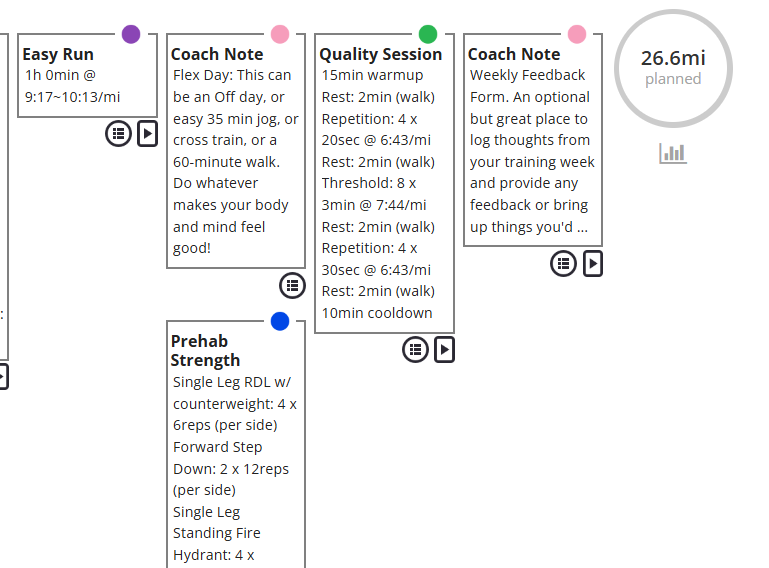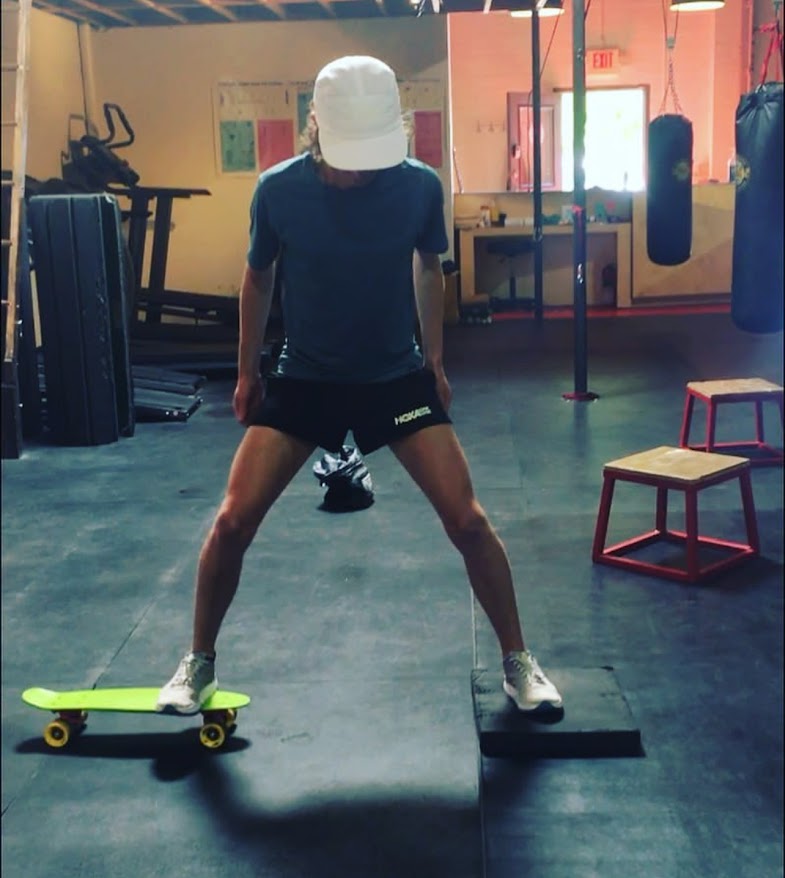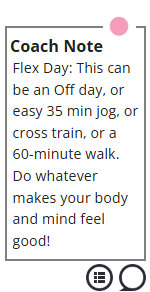What Is a Flex Day in Running?
A Flex Day is kind of like a “choose-your-own-adventure” day built right into your running schedule. It’s a day where you get to pick what feels best based on how you’re doing mentally and physically. It’s not just a rest day—

Why Are Flex Days Important for Runners?
Flex Days are huge for a few different reasons. They help prevent burnout and keep running enjoyable. But beyond that, they provide a ton of insight into what kind of runner you are. If you consistently use Flex Days as rest days, it might signal you’re at the right training load, or maybe mentally, you’re someone who needs that downtime to recharge. On the flip side, if you’re frequently choosing extra runs or cross-training, that tells us you might be craving more stimulus or enjoying a lighter training load that could handle a bit more volume. This feedback is incredibly valuable for coaching and helps us tailor training even better.

How Often Should Runners Take a Flex Day?
I usually recommend one to two Flex Days per week. That’s the sweet spot I’ve found. More than that, things start to get unstructured and chaotic. Less than that, and you might miss out on valuable recovery or the opportunity to adapt your training. The exact frequency really depends on individual factors like your mileage, background in other sports, or just how much you personally love to run. For instance, if you’re someone who’s great at swimming or cycling, we might lean more into cross-training Flex Days to keep that skill sharp and maintain variety in your routine.
How Do You Know When You Need a Flex Day?
If you’re not sure yet what mileage you feel best at, Flex Days are a perfect way to figure that out without overdoing it. Pay attention to your body—if workouts start feeling tougher than usual, you’re mentally drained, or you’re physically sore, that’s your cue. Flex Days help you ride the natural highs and lows of training, making sure you don’t build up too much fatigue. If training starts feeling overwhelming, that’s a strong sign it’s time to use your Flex Day to rest, cross-train, or just relax a bit more.

What Should You Actually Do on a Flex Day?
This is the fun part—you’ve got choices:
- Short, Easy Run (~35 min): Great if you feel energized and want some bonus miles without strain.
- Cross-training (~60 min): Cycling, elliptical, swimming—these are excellent aerobic alternatives without the heavy impact of running.
- Walk: Walking might be my favorite recovery hack. It boosts circulation, moves lymph fluid around, reduces puffiness, and it’s mentally refreshing.
- Complete Rest: Take this when your body or mind really needs a reset.
- Creative Activities: Pilates, yoga, cross-country skiing, rollerblading, or even basketball or frisbee. These add variety and keep training fun.
The key is choosing whatever makes you feel good and excited for your next training session.
Is “Running by Feel” Always the Best Approach?
Flex Days are a great way to practice running by feel, letting you tune into your body’s signals. However, we don’t want our entire training plan to be dictated purely by how we feel each day. Part of training is learning to show up and perform consistently, even when we’re not at our absolute best. Structured training gives us the discipline and readiness we need for race day. Flex Days offer a valuable balance—they let you listen and adapt occasionally, but most training days should follow the planned structure to build consistency and resilience.

Can Flex Days Hurt My Fitness or Progress?
Generally, no. But it’s all about balance. If you start turning every Flex Day into rest, or only cross-train without much running, you’ll eventually hit diminishing returns. We do have to run consistently to get better at running. That’s why I stress that one to two Flex Days per week is ideal—it gives just enough flexibility without losing structure.
Common Misconceptions About Flex Days
A big misconception is seeing Flex Days strictly as rest days. Resting is great, but Flex Days are also opportunities to have fun and experiment. Maybe you love classes like F45 or barre, or maybe rollerblading and cross-country skiing are your jam. This is your chance to mix it up. Flex Days should be creative, enjoyable, and refreshing, not just “off days.”

How to Incorporate Flex Days into Your Training
Include one or two clearly labeled Flex Days each week in your plan. Communicate clearly to yourself (or your athletes) that these days offer permission to adapt and be intuitive. Listen closely to your body’s signals—physical fatigue, soreness, mental tiredness—and use these insights to choose activities that recharge you. Ultimately, Flex Days are there to keep training sustainable, enjoyable, and effective long-term. Embrace them and stay excited about your running!



